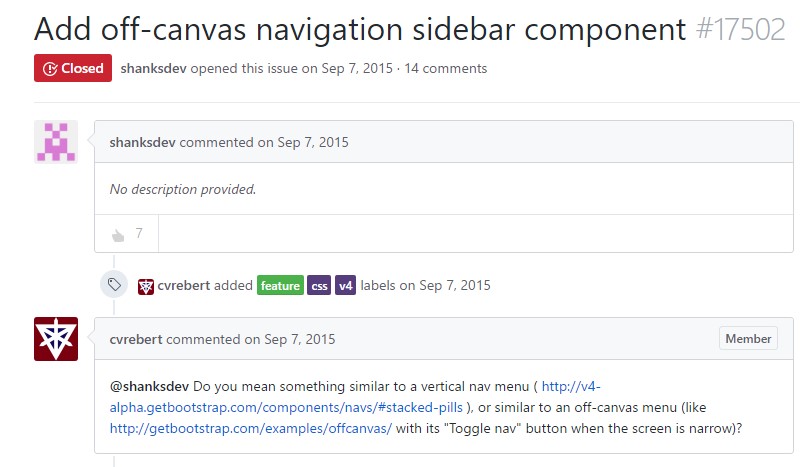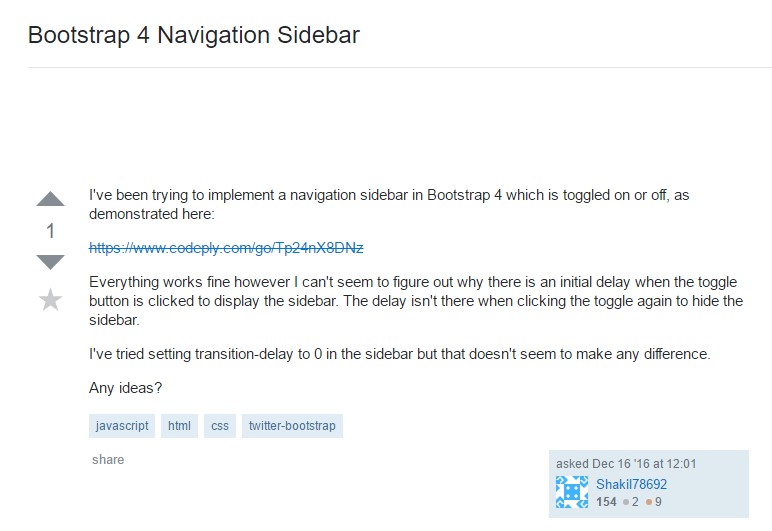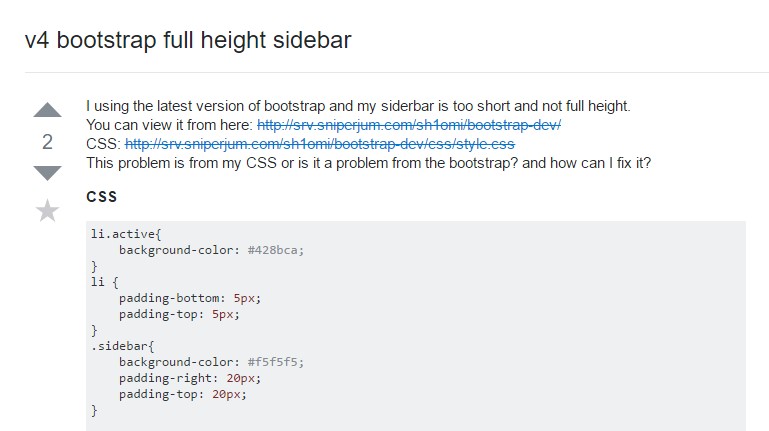Bootstrap Sidebar Toggle
Introduction
Around the majority of the web pages we currently spot the material stretches from edge to edge in width with a helpful navigation bar just above and simply immediately becomes resized when the determined viewport is achieved and so more or less the showcased content fluently uses the full width of the page attainable. However at a several events the desired target the webpages have to provide require together with the fluently resizing material area a different area of the obtainable display screen width to get specified to a still vertical feature together with some hyperlinks and web content in it-- in other words-- the well-known from the past Bootstrap Sidebar Collapse is needed. ( read here)
Ways to employ the Bootstrap Sidebar Toggle:
This is somewhat outdated approach but if you certainly want to-- you are able to set up a sidebar component with the Bootstrap 4 framework that along with its flexible grid system also deliver a several classes designed most especially for making a secondary rank site navigation menus being really docked around the webpage.
However let us start it quick-- through simply just nesting some rows and columns -- It is expected this maybe the simplest approach. And also by nesting I mean you have the ability to gave a
.rowAnd so let us say we need a right coordinated Bootstrap Sidebar Dropdown with some material within it and a basic page to the left of it. We have to set up the grid tier down to what we want to keep this placement prior to the sidebar and the major content stack around each other-- let us state-- medium and up. And so a workable solution attaining this might be this:
Primarily we need a container component to hold the rows and columns and given that we're building something a little bit more complex the
.container-fluidNext we require a
.row.col-md-9.col-md-3Next in all of these columns we can easily just build some excess
.rowA number of additional methods
Additionally in case you need to create a sidebar navigation menu along with the desired
.col-*.sidebar<main>.col-*Additionally in case you need to develop a sidebar navigation menu together with the needed
.col-*.sidebar<main>.col-*Inspect a couple of online video short training about Bootstrap sidebar
Related topics:
Add in off-canvas navigation sidebar ingredient

Stackoverflow: Bootstrap 4 Navigation Sidebar

V4 Bootstrap whole height sidebar
